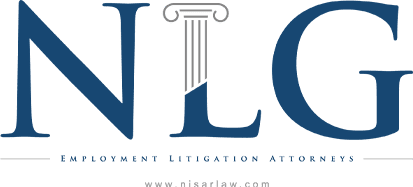It is often difficult to prove a hostile work environment claim in the New York courts. There is no universal definition of what precise acts qualify as creating such an environment. As a general rule, according to the U.S. Second Circuit Court of Appeals, courts must look at whether the workplace in question “is permeated with discriminatory intimidation, ridicule, and insult, that is sufficiently severe or pervasive to alter the conditions of the victim's employment and create an abusive working environment.” Furthermore, this mistreatment must be rooted in a “protected characteristic” of the affected employee, such as race or gender.
Federal Court Rejects African-American Teacher's Lawsuit
It is important to understand that not every racially or sexually motivated incident will convince a judge that a hostile work environment exists. Even a series of incidents over an extended period of time may be insufficient unless it is properly corroborated by the evidence of some “animus” towards a protected class. In plain English, you can not succeed in a hostile work environment lawsuit just by pointing to a handful of unpleasant work incidents or personality conflicts.
A recent unpublished Second Circuit decision, Berrie v. Board of Education of Post Chester-Rye Union Free School District, offers a helpful illustration. In this case, an African-American school teacher sued his school district, alleging he was subjected to a hostile work environment over a five-year period. The bulk of the plaintiff's allegations revolved around three incidents:
- In February 2013, the plaintiff alleged a teacher at his school circulated a racist email to the rest of the faculty.
- In April 2013, the plaintiff alleged the principal of his school “intentionally used a hockey stick to hit a ball” at the plaintiff's head while he was teaching a class.
- In May 2013, the principal emailed the plaintiff an article written by a prominent African-American writer titled “Beyond the Code of the Streets,” which the principal claimed he read because he was “trying to figure out how [the plaintiff] could be so angry” at him about the previously mentioned hockey-stick incident. The plaintiff said he interpreted this as the principal denigrating him as an “angry Black man.”
The Second Circuit, affirming a trial court's earlier ruling, said that none of these incidents gave rise to an inference of “racial animus” against the plaintiff. With respect to the hockey-stick incident, the Court said the evidence showed it was “accidental.” Other alleged events of a hostile work environment–mostly involving isolated acts of anonymous vandalism targeting the plaintiff and a variety of “racially offensive remarks”–were not “severe or pervasive enough” to qualify as a hostile work environment.
Call an NYC Hostile Work Environment Lawyer Today
If you are dealing with a hostile work environment, it is a good idea to document any evidence that can help prove your claim if it becomes necessary to go to court. You should also consult with an experienced New York employment attorney who can advise you of your rights. Contact the Law Offices of White, Nisar & Hilferty, LLP, if you need to speak with a lawyer today.

